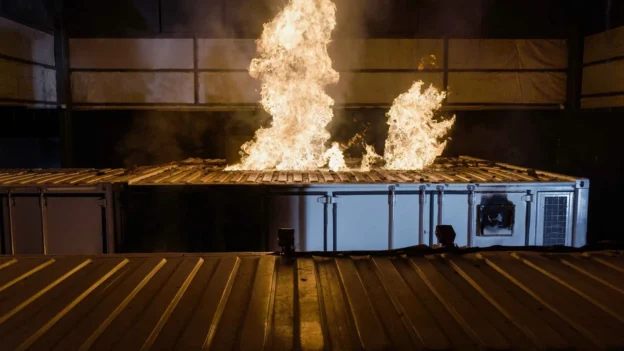In a controlled, but highly challenging environment, Envision Energy conducted a thermal resistance assessment of thermal resistance applying conditions equivalent to a high-severity fire scenario.
Four units of your intelligent storage system, fully charged and arranged only 5 centimeters apart, were exposed to heat without external intervention for more than 49 hours.
This arrangement, considered the densest ever recorded in BESS tests, simulated the worst-case scenario in terms of thermal coupling.
Full BESS system integrity
The main container reached temperatures of up to 1297 °C. Despite this, there was no fire spread or structural damage to adjacent units. The nearby batteries maintained stable internal temperatures, well below critical thresholds. In addition, the affected container retained its full structural integrity, with no collapse or leaks.
To ignite the fire, a heat source was applied to uninsulated cells positioned in the center of the configuration. The ignition process took almost three hours, significantly increasing the response time available to the detection and risk mitigation systems.
All gases generated were captured and treated in real time, avoiding the release of pollutants into the environment. pollutants into the environment.. The test was conducted under the direct supervision of the CSA group and fire engineering experts, validating the technical performance of the system and its compatibility with operational sustainability criteria.
AI applied to energy security
The intelligent system Envision’s intelligent system combines artificial intelligence for thermal anomaly detection with a multi-tier distributed security architecture. This design allows the isolation of critical events within a single container, preventing the entire system from being affected.
Envision currently has more than 300 active projects with no security incidents, consolidating its leadership in energy storage solutions. secure and scalable energy secure and scalable energy storage solutions.
The 49-hour test validates the structural effectiveness of the system under extreme conditions and reinforces the confidence of insurers and regulators in its global implementation.
Source and photo: Envision

